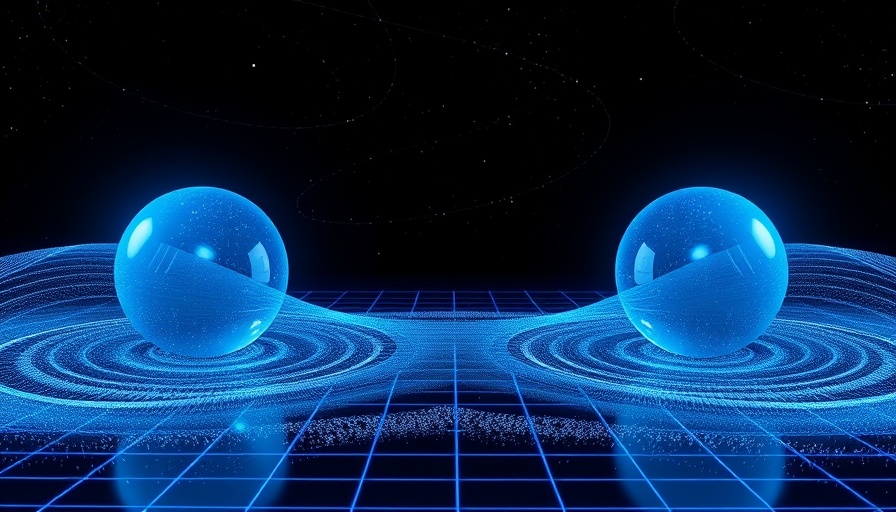
The Cosmic Dance of Black Holes and the Hidden Math of the Universe
In a breakthrough announced recently, scientists have unveiled the most accurate model of gravitational wave emissions from two black holes spiraling close together. Published in Nature, this research utilizes advanced mathematical concepts from theoretical physics to describe the unseen ripples in space-time caused by massive celestial bodies. This discovery not only deepens our understanding of the universe but also illustrates the profound relationship between abstract mathematical ideas and tangible cosmic phenomena.
Understanding Gravitational Waves
Gravitational waves are disturbances in the fabric of space-time created by the motion of massive objects like black holes or neutron stars. First theorized by Einstein over a century ago, these waves were directly detected in 2015, marking a significant advancement in astronomical science. The discovery of gravitational waves has transformed our ability to observe cosmic events, providing invaluable insights into phenomena that previously eluded detection.
Shifting Focus: The Importance of Scattering Events
While previous research heavily concentrated on black hole mergers, the latest study shifts focus to scattering events—instances where black holes pass closely without merging. These encounters produce strong, identifiable gravitational wave signals that can be used to refine our understanding of the cosmos. The shift in focus emphasizes not just the dynamics of merging events but the importance of understanding more subtle interactions.
Precision through Quantum Field Theory
The research team, led by Mathias Driesse from Humboldt University in Berlin, employed quantum field theory, usually associated with elementary particle interactions, to model these complex black hole interactions. By layering multiple levels of approximation, they reached what is termed the fifth post-Minkowskian order, achieving unprecedented precision in predicting how black holes behave during these close encounters.
Implications for Future Research
Achieving such a high level of precision not only represents a major milestone in gravitational wave research; it also sets a robust foundation for future studies. Gustav Mogull, co-author and particle physicist at Queen Mary University, described the team’s astonishment at their results, noting its significance—"the most precise solution to Einstein's equations produced to date." This achievement enables scientists to better interpret data from observatories like LIGO and Virgo, enhancing our capability to forecast cosmic events.
Connecting Mathematics and Cosmology
This advancement underscores the integral role that mathematics plays in our understanding of the universe. As researchers delve deeper into the complexities of black holes and gravity, the interplay between theoretical constructs and observational astronomy becomes increasingly critical. By enhancing our models, scientists can derive deeper insights into the violent and enigmatic nature of cosmic interactions, potentially leading to new innovations in technology and science.
In conclusion, the dance of black holes is not just a mesmerizing cosmic spectacle; it's a profound illustration of how intricate mathematics illuminates our understanding of the universe's fabric. As scientists continue to unfold these mysteries, the boundary between abstract mathematics and tangible cosmic phenomena grows ever more intertwined.
 Add Row
Add Row  Add
Add 




Write A Comment